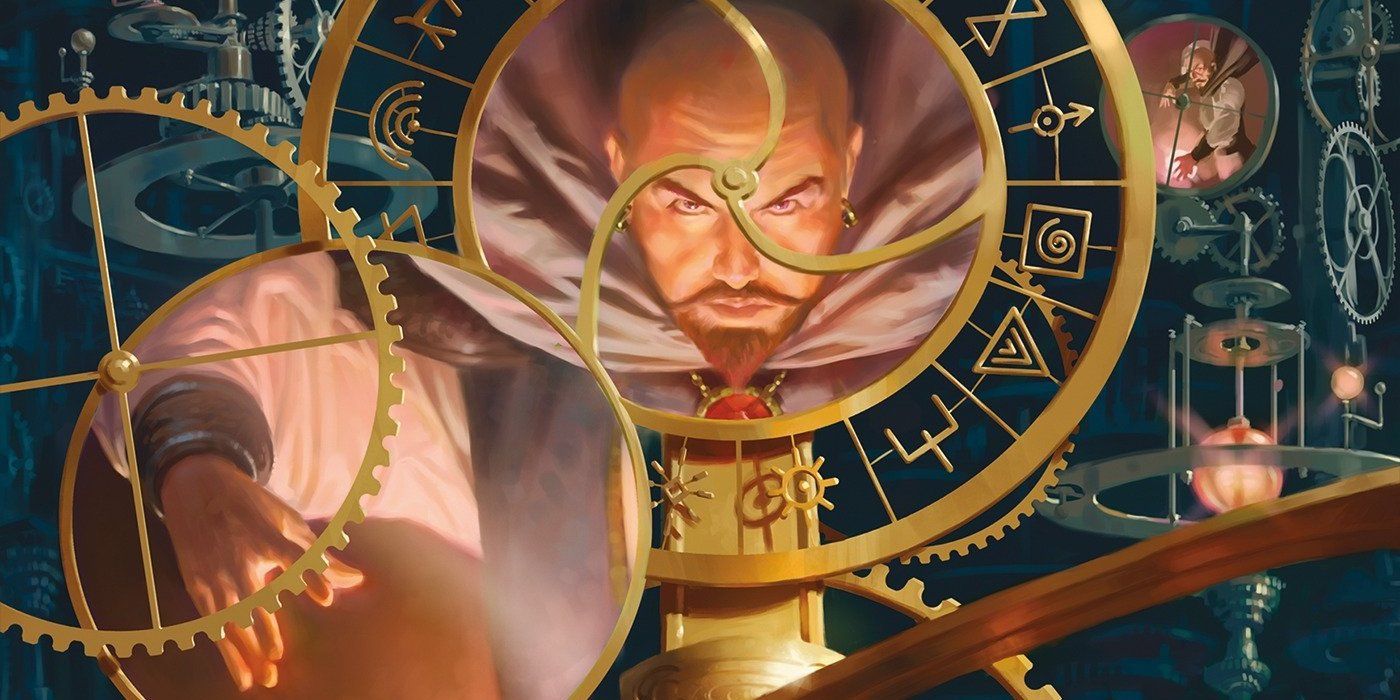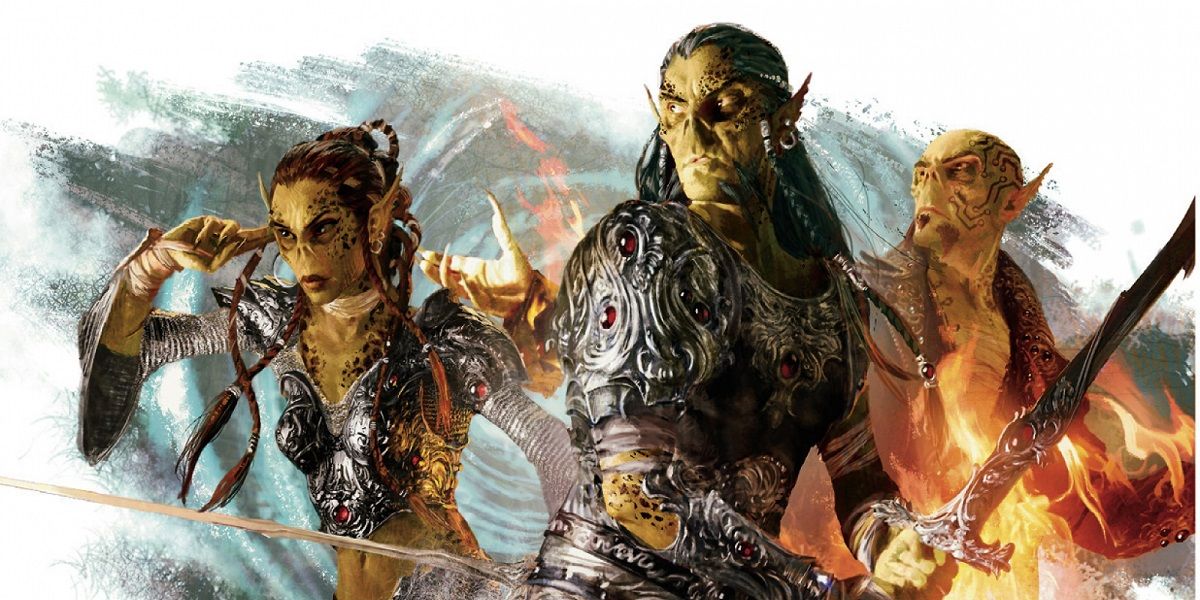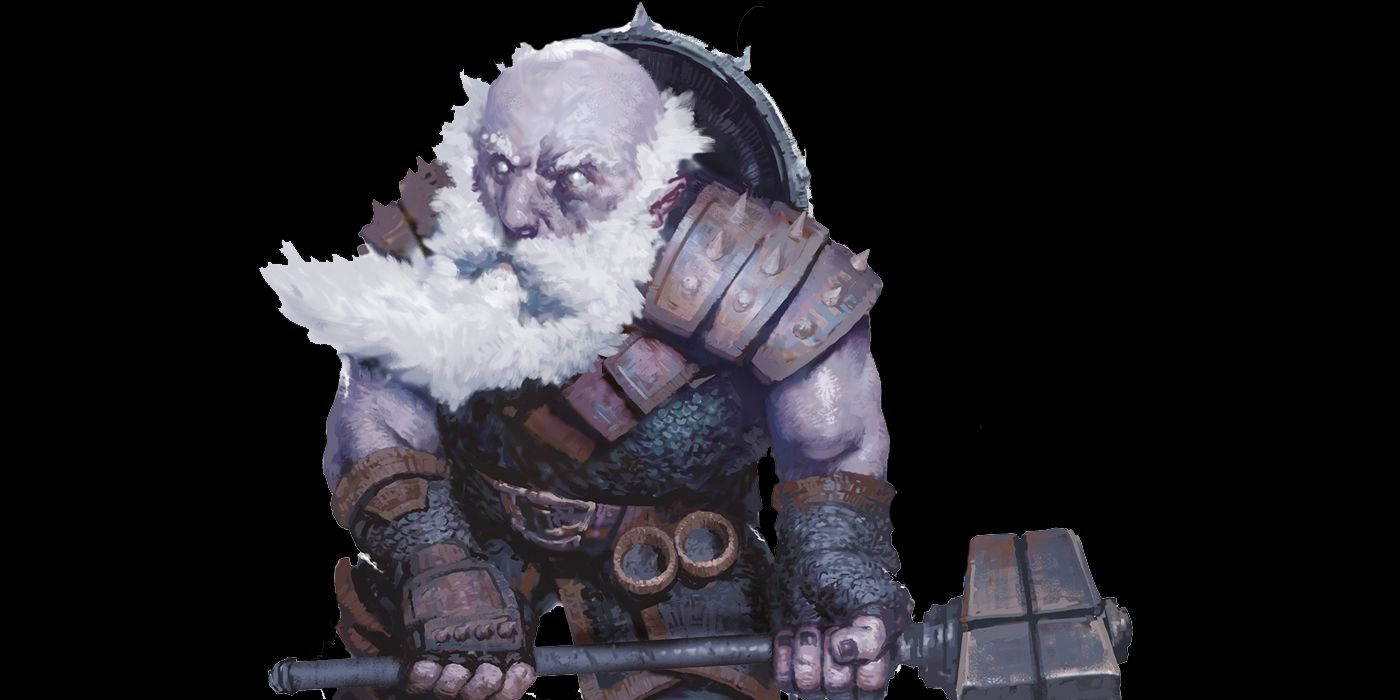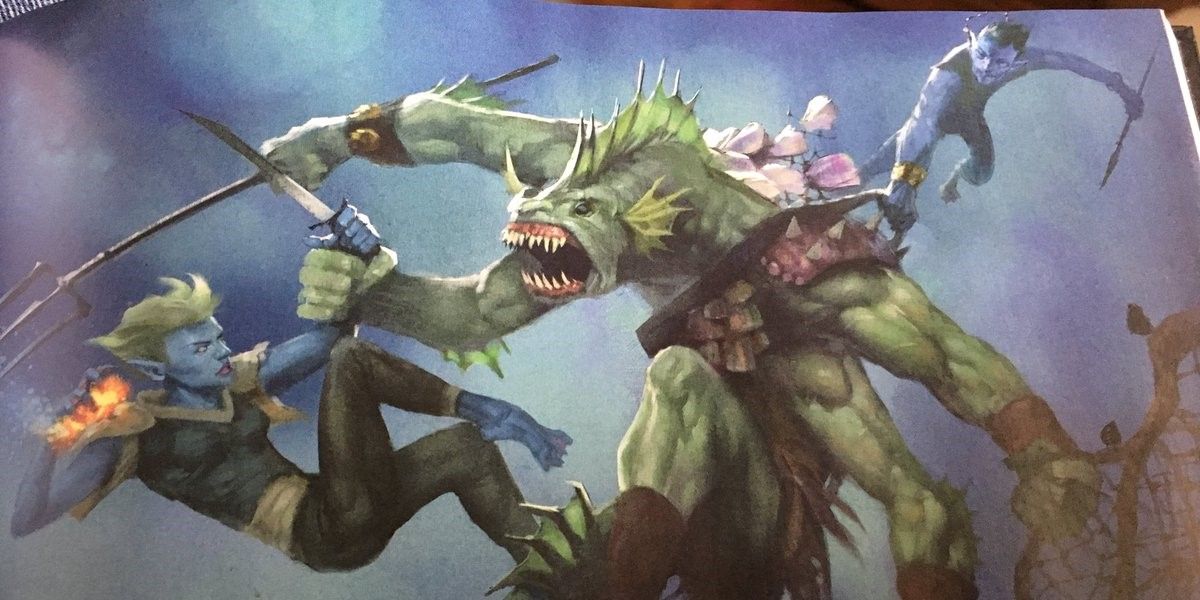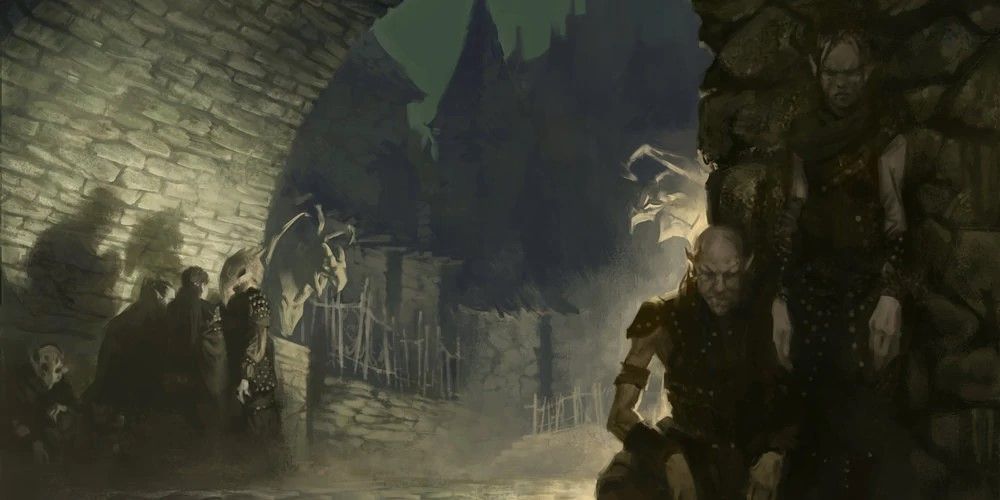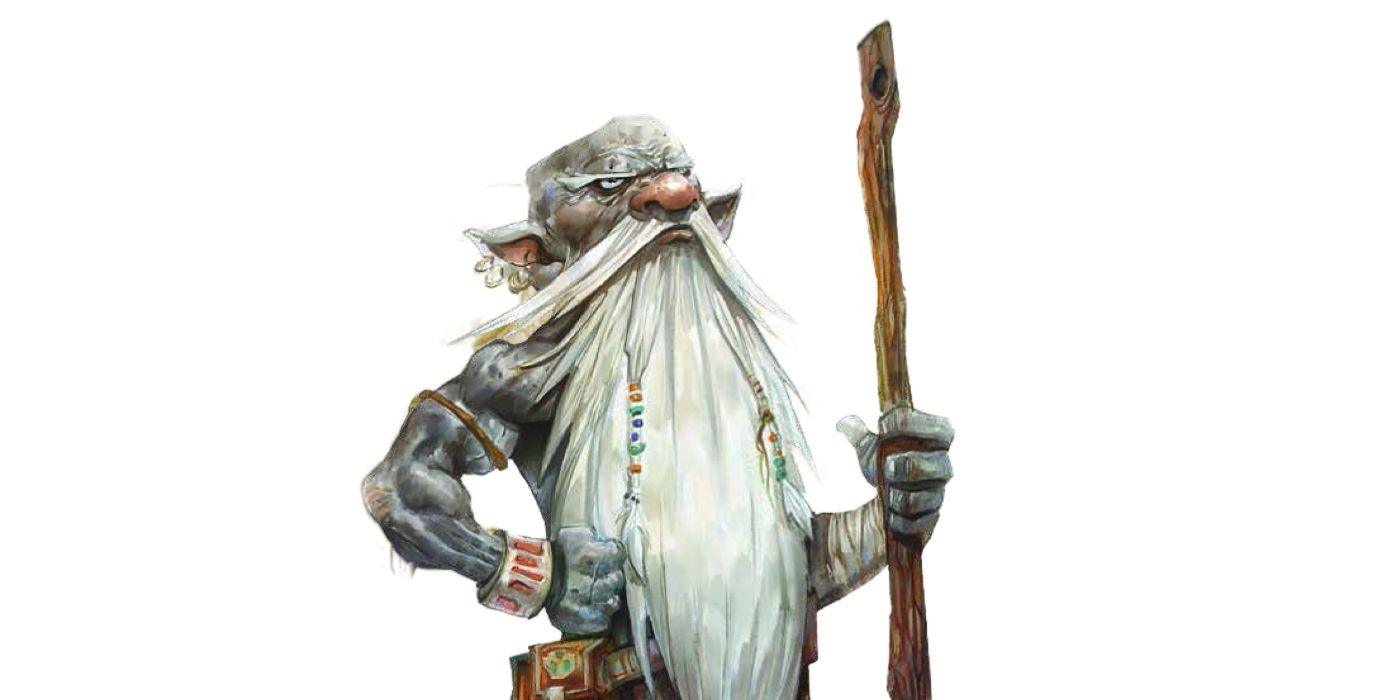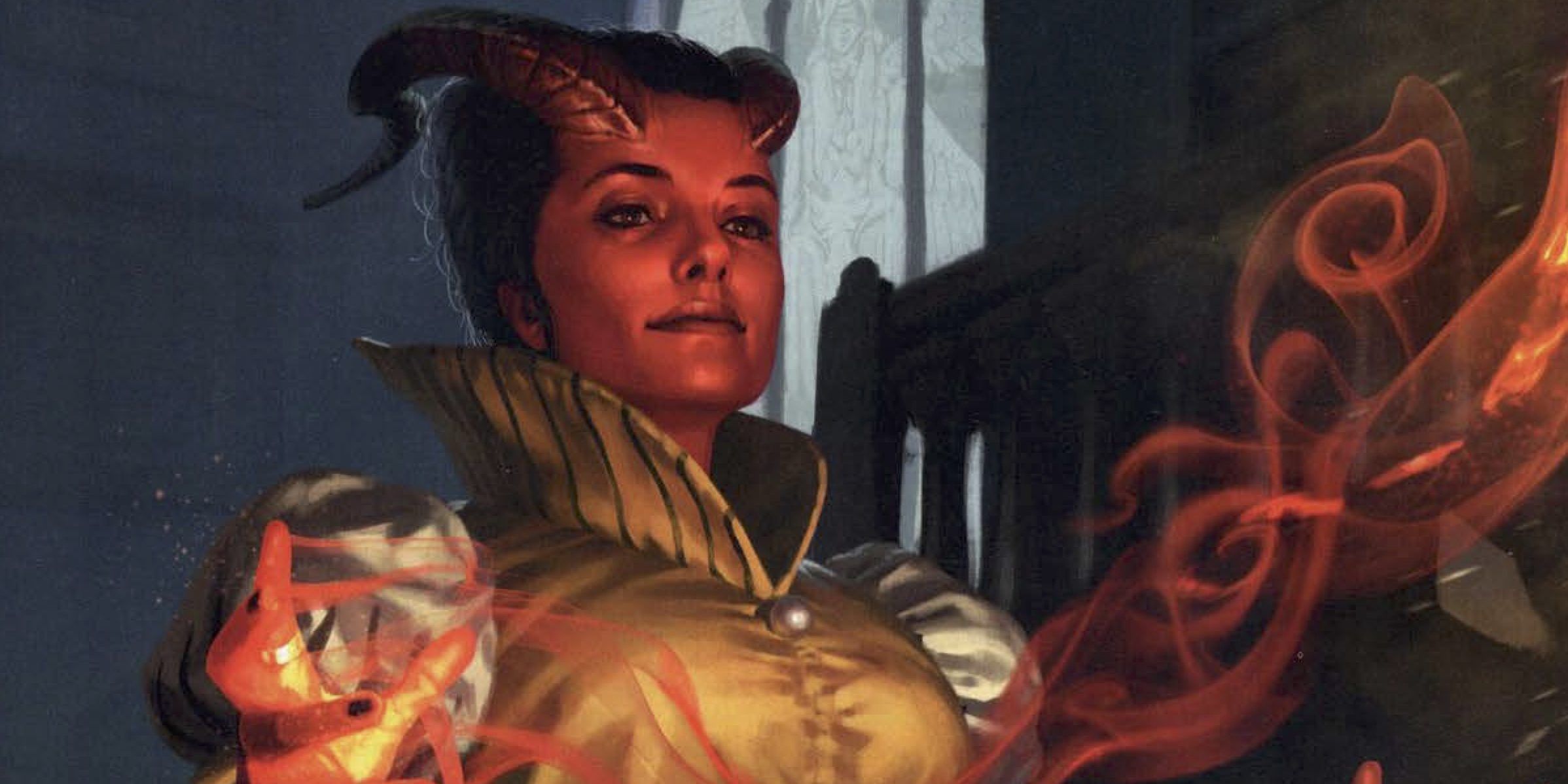Mordenkainen's Tome of Foes is an older supplement for Dungeons & Dragons' Fifth Edition focused mainly around expanding the lore for various kinds of different D&D races and groups. The book also provides additional subraces for several existing D&D races, as well as a new race in the form of the Gith.
Each of these subraces provides different flavors for the races they supplement, and they can be exciting tools for creating different kinds of characters. Racial traits are an important part of 5e's character creation, though the recently released Tasha's Cauldron of Everything makes them more flexible. Regardless, let's break down the different options provided in the Tome of Foes and how players might want to make use of them.
Gith
The Gith are an entirely new race introduced in the Tome of Foes, and they have one of the most unique origins. They originally labored under the brutal tyranny of the mindflayers, but once they broke free, they remained an extraplanar race. They scattered among a thousand different planes and divided into two factions, the Githyanki and the Githzerai, groups who philosophically disagreed on the direction in which they should take their civilization.
The Githyanki are a martial and warrior-based people, defined by their conquering of different races and constant hunting of mindflayers. They gain light and medium armor, as well as longsword proficiency. They also get the spells Jump and Misty Step for increased mobility. Meanwhile, the Githzerai believe in esoteric deliberation and scholarly pursuit. They gain advantage against saves that would charm or frighten them, as well as the spells Shield and Detect Thoughts for defense and information gathering.
Duergar
Duergar are a kind of dwarf changed by a bloody rebellion against mindflayers that are quite different from their surface-dwelling brethren. They gain superior darkvision to account for how far underground they live, similar to Drow. In another similarity to Drow, they gain Sunlight Sensitivity, which can be a keen disadvantage during fights that take place in bright light.
Their other, flashier abilities come in the form of Duergar Resilience and Magic. Duergar Resilience is like Dwarven Resilience (which provides advantage on saves against poison), but it also offers the same benefit against the charmed and paralyzed conditions. Duergar Magic gives them the ability to cast multiple potent spells, including Invisibility and Enlarge Person. Enlarge Person can provide a powerful boost in damage for melee builds, while Invisibility is a great escape button for any character to have in their arsenal.
Eladrin
Eladrin are elves affected by the magic of the seasons and the Feywild, resulting in a more primal, chaotic nature. Their signature trait is the Fey Step feature, which allows them to teleport up to 30 feet as a bonus action. This is similar to the spell Misty Step, but since it's not a spell, casters can use their mobility and any other spell on the same turn. Depending on what kind of season they're attuned to, individual Eladrin might have different properties for their Fey Step. Autumn Eladrin charm creatures near where they end up, while Winter Eladrin frighten them. Spring Eladrin can teleport another creature instead, and Summer Eladrin deal fire damage where they end up.
Sea Elf
Sea Elves are Elves that have over generations become accustomed to life among bodies of water, whether they be rivers, lakes or seas. They gain a medley of different abilities to mechanically mesh with that idea. They have proficiency with several weapons that might be used for fishing, including the spear, trident and net. Sea Elves also have an inherent swimming speed of 30 feet and can breathe underwater.
Their final traits are both related to language, one of which is the ability to speak Aquan, the language of water elementals. Their other (perhaps more useful) trait lets them speak to any animals with an innate swimming speed, although they can only communicate simple ideas. This is similar to the Druid spell Speak with Animals, and although it is more restrictive, it's still an ability that creative players can make use of.
Shadar-Kai
Shadar-Kai are another kind of elf whose origins and story are deeply tied to an extraplanar entity of the Forgotten Realms -- the Raven Queen. Once an elven queen of immense beauty and magical power, the Raven Queen rose to godhood in an attempt to end the interlocked struggle between the two traditional gods of the Elven pantheon, Corellon and Lolth. The Shadar-Kai are the elves who supported her in her ascension.
When the Raven Queen was pulled into the nightmarish dimension of the Shadowfell, her loyal followers were dragged along with her. They have resistance to necrotic damage, and can teleport 30 feet with a feature very similar to the Eladrin's Fey Step. As almost a "fifth season," the Shadar-Kai gain a unique benefit when they teleport this way, giving them resistance to all kinds of damage until their next turn.
Deep Gnome
Like the Drow or Duergar, Deep Gnomes exist as counterparts to their aboveground brethren. They also go by another name: Svirfneblin. They're isolationists, and tend to avoid other races and the conflicts that might come from dealing with them. To better navigate the Underdark where they live, Deep Gnomes have 120-foot darkvision. Their only other significant trait is Gnome Cunning, which gives them advantage on Intelligence, Wisdom and Charisma saving throws made against magical effects. This is a significant portion of saving throws that a character might have to make, as Wisdom is the single-most common saving throw aside from Dexterity.
Tiefling
While there are plenty of subclasses available in the Tome of Foes, none have more variety than the Tiefling. The book introduces nine new Tiefling subraces, each of which represents an infernal link to a different lord of the Nine Hells. Each gains darkvision and fire resistance, as well as a special trait replacing the normal spells that Tieflings gain access to.
These special traits fit a different theme. Glasya, Dispater and Fierna gain spells that aid in deception and persuasion, while Baalzebul has spells which debuff foes. Levistus' spells reflect the lord's chilly domain, and Mammon gains utility-based spells. Finally, Zariel and Mephistopheles have access to spells that are offensive in nature. Between these eight different sets of spells (in addition to the Tiefling default), players can easily customize the focus for their character.

